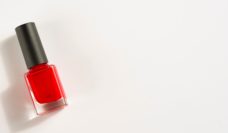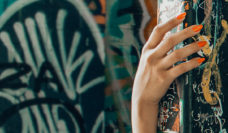Every 15 seconds, the US poison control center receives a new report. Oftentimes, the person harmed is a child under two years old, and cosmetics, or more broadly “personal care products,” are to blame.
In a recent study, researchers used data from the National Electronic Injury Surveillance System to identify children (0-2 years) who were treated in emergency departments for cosmetic-related poisonings. Between 2002 and 2016, they found four categories of cosmetic products that dominated the reported cases: nail, hair, skin-care products, and fragrances.
As shown in the figure above, shampoo, conditioner, dye, relaxer, and other hair-care products were the leading cause of toxic ingestions (31%). Nail care (nail primer, polish, and polish remover) made up the second largest category, accounting for 26% of injuries. This was followed by skin care (25%) products such as creams or lotions, powders, sunscreens, and essential oils.
Cosmetics are often designed to be visually appealing and are easy to open. Sometimes they resemble food items as in the case of chocolate body exfoliants and fruity soaps, lotions, and shampoos. They usually smell good. To avoid the all-too-frequent poisonings (7,270 exposures per 100,000 children)
the American Academy of Pediatrics recommends using safety caps and keeping all cosmetics high and out of reach from children in a locked cabinet.
Databyte via Vadja J., et al. “Cosmetic-Related Injuries Treated in US Emergency Departments: 2002 to 2016.” Clinical Pediatrics, 2019, doi: 10.1177/0009922819850492. Data visualization by Jamal Yearwood.














